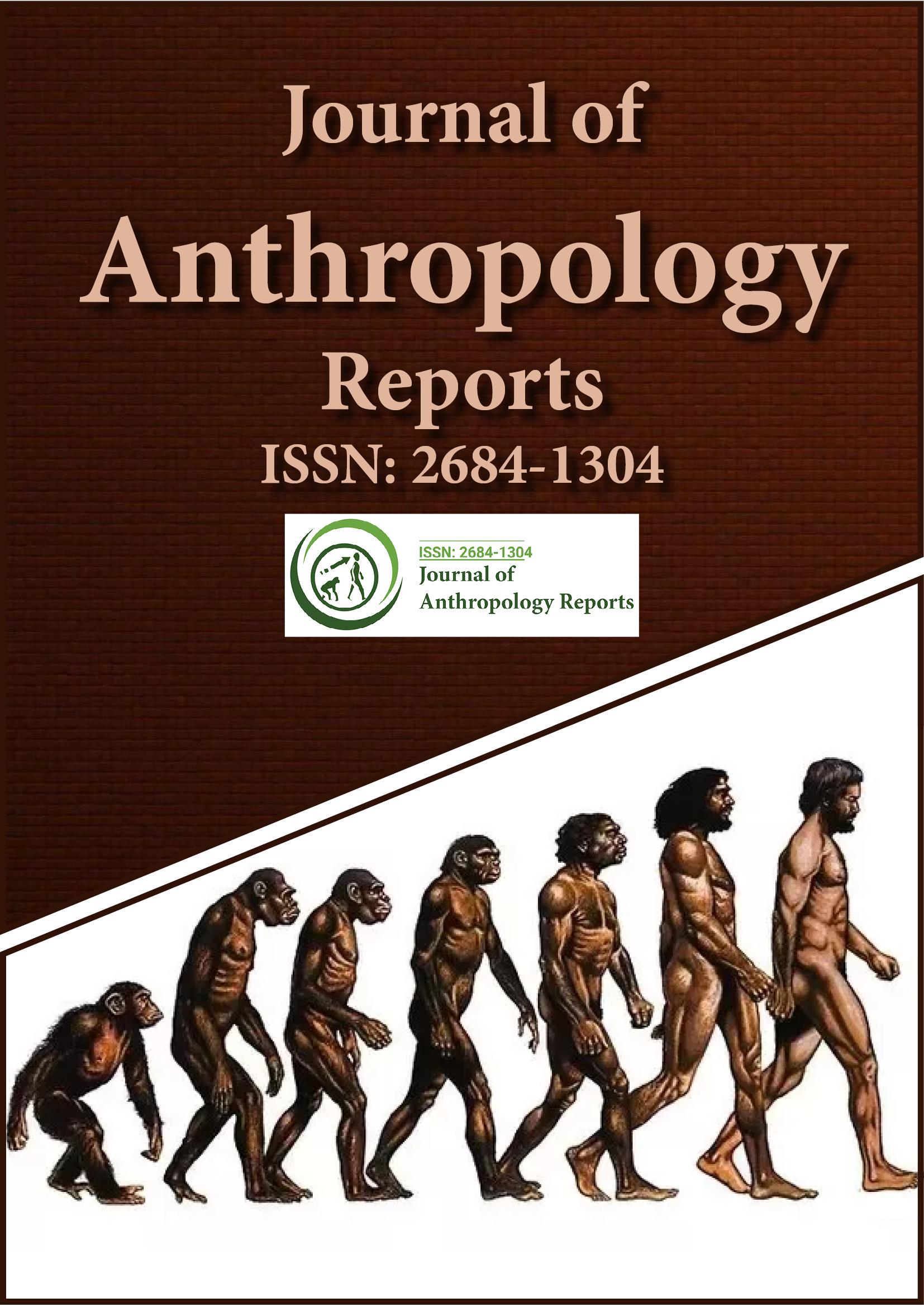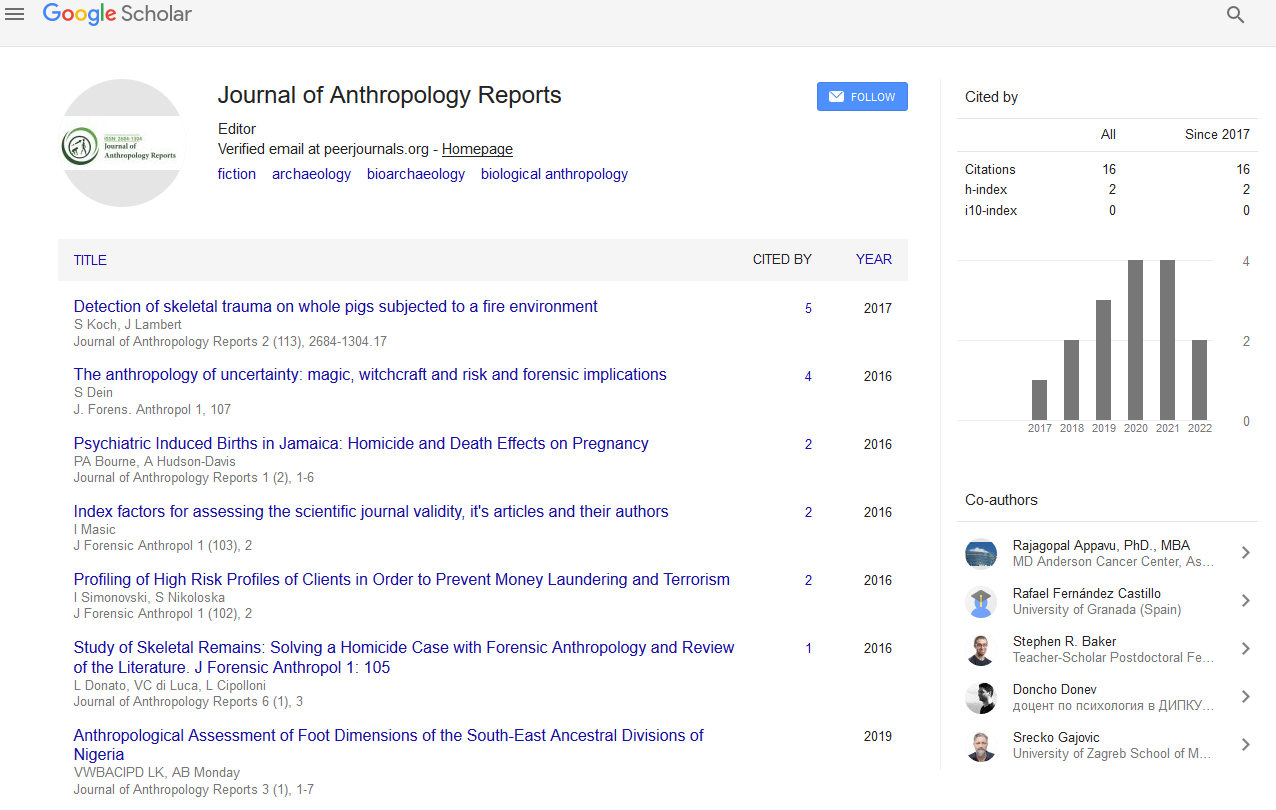Indexed In
- RefSeek
- Hamdard University
- EBSCO A-Z
Useful Links
Share This Page
Journal Flyer

Open Access Journals
- Agri and Aquaculture
- Biochemistry
- Bioinformatics & Systems Biology
- Business & Management
- Chemistry
- Clinical Sciences
- Engineering
- Food & Nutrition
- General Science
- Genetics & Molecular Biology
- Immunology & Microbiology
- Medical Sciences
- Neuroscience & Psychology
- Nursing & Health Care
- Pharmaceutical Sciences
Perspective - (2022) Volume 5, Issue 4
Analysis and Trace Evidence of Forensic Archeology and Scene Processing
Pargag Vinixin*Received: 07-Jun-2022, Manuscript No. JFA-22-17378; Editor assigned: 09-Jun-2022, Pre QC No. JFA-22-17378(PQ); Reviewed: 23-Jun-2022, QC No. JFA-22-17378; Revised: 30-Jun-2022, Manuscript No. JFA-22-17378(R); Published: 07-Jul-2022, DOI: 10.35248/2684-1304-22.5.131
Description
Archaeology has many functions in the field of forensics. It is a scientific discipline that applies archaeological techniques to recover, analyze, and interpret human remains from a variety of medico-legal and contemporary circumstances. The forensic inquiry allows for the examination and interpretation of death scenes and their associated bodily remains for information that can reveal the identity of the person as well as to associate the evidence and context that reveal the circumstances of the crime. The role of expansion in the Forensic Archaeology is to assist in the location of missing persons both from recent and remote contexts will be presented.
The main fields of forensic archaeology include:
• Graves and grave sites.
• Objects related to crime.
• Surface disposal of human remains.
• Mass graves.
• Buried evidence relevant for civil cases.
In missing cases
The current research is on missing persons at national and local level suggest that missing persons from both intentional and accidental means are often found within a 1–5 mile radius of where they were last seen. By examining current patterns in the manner of death or information enlightening by whose hand it can be learned about the particular circumstances that lead to body deposition and behavior at death scenes.
Forensic archaeologists are found in grave sites including bones, using a range of techniques. “Carbon Dating” is used to determine whether the grave site is recent or ancient involved in the excavation of mass graves in order to produce evidence for war crimes trials or in the collecting and collating of human remains and personal effects at mass fatalities such as bomb, gas explosions, or plane crashes.
As information is compiled the trends in the data assist are creating a series of correlates that can be used as predictors of a particular manner of death. These data provide scenarios that can be used as predictive models to implement when a person goes missing it reduce the time between disappearance and location rescue or recovery. It has been integral to the investigations of missing person’s cases and practitioners are often called upon to assist with the recovery of human remains and forensic evidence from the surface-scattered scenes, clandestine graves, fire scenes and large-scale mass disaster scenes. The evidence from forensic archaeologists is about how the materials are degraded or decomposed over the time and in specific conditions are important as it can help to determine. For example, how long the body has been buried by the state of the clothes or the surrounding soil or how long stolen goods have been buried by the subsequent damage to metal and other materials.
There are non-invasive techniques at which archaeologists can find the sites without digging. For examples, geophysical surveys do not disturb the soil include magnetometry, resistivity, and ground-penetrating radar. Scientific dating uses the biological and physical methods for assessing the time when things happened in the past. The applications of archaeological techniques within forensics enable to make connections between objects human remains and the burial/deposition environment.
Conclusion
Additionally, this modeling proves when re-examining of cold cases the unfound missing persons have been located after considerable time utilizing “Forensic Archaeology Recovery (FAR)” personnel, will be presented to highlight the use of predictive modeling in search and recovery and in unfound missing person’s cases. Understanding the patterns and changes in human behavior enhances our knowledge of the past. It aids us in planning not only our future but for generations to come. Many people believe that public archaeology is critical to understanding, protecting, and celebrating our rich and diverse cultural heritage.
Citation: Vinixin P (2022) Analysis and Trace Evidence of Forensic Archeology and Scene Processing. J Anthropology Rep. 5:131.
Copyright: © 2022 Vinixin P. This is an open access article distributed under the terms of the Creative Commons Attribution License, which permits unrestricted use, distribution, and reproduction in any medium, provided the original author and source are credited.

